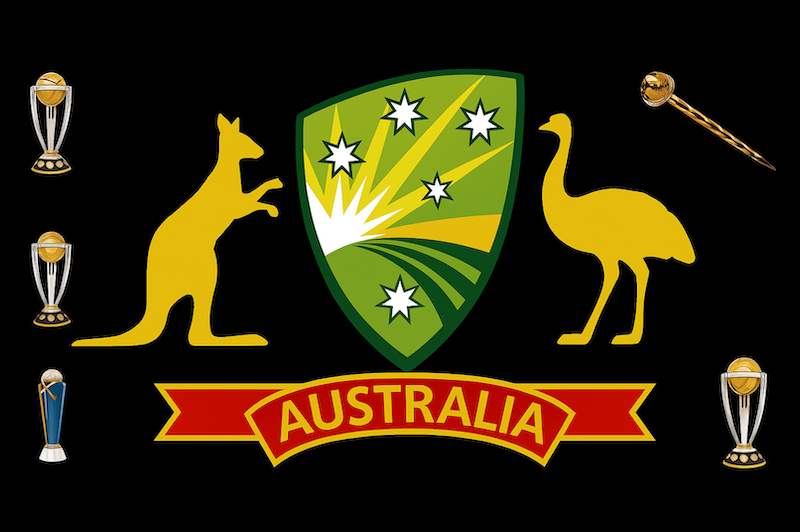
In the world of fast bowling, pace and aggression often take center stage. But Glenn McGrath built his greatness on something different, and perhaps even deadlier: Accuracy. Ball after ball, he landed it on the same spot, forcing batsmen into mistakes. He wasn't about raw speed, he was about control, patience, and outthinking the best.
Narromine to the National Team
- Raised in the small town of Narromine, he honed his craft by bowling for hours at homemade backyard targets, building the accuracy that became his trademark.
- Discovered by former Test cricketer Doug Walters, who guided him towards Sydney Grade Cricket and eventually New South Wales.
- Made his first-class debut for New South Wales in 1992–93 and was fast-tracked to the national side after just 8 matches.
- Debuted for Australia in 1993 against New Zealand, standing out with relentless control rather than express pace.
- Quickly established himself as the heir to Australia’s fast-bowling greats, cementing his place with a pivotal role in the 1995 series win against the West Indies.
Accuracy Over Pace
- Built his reputation on relentless accuracy, landing the ball in the same spot over and over until batsmen made mistakes.
- His tall frame (6 ft 6 in) and high-arm action generated steep bounce, making even defensive strokes dangerous.
- Treated every batsman like a puzzle, outthinking opponents instead of relying on intimidation or raw pace.
- Consistently dismantled the best, famously dismissing Mike Atherton 19 times, Brian Lara 18 times, and Sachin Tendulkar 13 times across formats.
- Showed that patience and precision could outshine sheer speed, creating a model later followed by bowlers like James Anderson and Josh Hazlewood.
Defining Performances
- Announced himself as a world-class bowler with 8 for 38 at Lord’s in 1997, one of the greatest spells ever bowled at the venue.
- Delivered a decisive 5-wicket haul in the 1995 Bridgetown Test, playing a key role in ending the West Indies’ 15-year dominance over Australia.
- Produced his career-best Test figures of 8 for 24 against Pakistan at the WACA in 2004, a devastating spell that ripped through the batting order.
- Reached the landmark of 500 Test wickets at Lord’s during the 2005 Ashes, cementing his place among cricket’s all-time greats.
- Destroyed England in the 2005 Ashes opener at Lord’s, taking 5 for 53 in the first innings and 4 for 29 in the second (9 for 82 in the match), earning Player of the Match honors.
Explore More Stories

Australia's Golden Era of Cricket: How They Ruled the World from 1999 to 2007
Between 1999 and 2007, Australia was cricket's unstoppable force. They won three consecutive World Cups, dominated Test cricket with two 16-match winning streaks, and built a dynasty powered by Ponting, Warne, McGrath, and Gilchrist. This is the story of how they became the most feared team in modern cricket.

2005 Ashes: The Summer Cricket Became Theatre
The 2005 Ashes was more than just a cricket series. It was a rollercoaster of emotion, courage, and unforgettable moments that brought Test cricket back to life. England’s long wait finally ended, and the world watched history unfold.
World Cup Performances
- Played a starring role in 3 consecutive World Cup wins (1999, 2003, 2007), making him one of the most successful players in tournament history.
- Took 18 wickets in the 1999 World Cup, including key strikes in the knockouts that powered Australia to their second title.
- Produced the spell of his ODI career in 2003, returning 7 for 15 against Namibia, still the best World Cup bowling figures.
- Dismissed Sachin Tendulkar in the 2003 World Cup final, helping Australia secure back-to-back titles.
- Bowed out in style in 2007, finishing as the tournament’s leading wicket-taker with 26, sealing his third World Cup crown in his farewell international series.
Career Totals
| Format | Matches | Wickets | Average | Economy | 5w | Best |
|---|---|---|---|---|---|---|
| Tests | 124 | 563 | 21.64 | 2.49 | 29 | 8/24 |
| ODIs | 250 | 381 | 22.02 | 3.88 | 7 | 7/15 |
| World Cups | 39 | 71 | 18.19 | 3.96 | 2 | 7/15 |
Career Highlights
- Retired as the leading wicket-taking fast bowler in Test cricket (563 wickets), a record at the time.
- All-time highest wicket-taker in ICC Cricket World Cups with 71 wickets across four editions.
- Holds the record for best bowling figures in a World Cup match — 7/15 against Namibia in 2003.
- Dismissed Michael Atherton 19 times in Tests, the most dismissals of one batsman by a single bowler.
- Renowned for extraordinary control, maintaining a career Test economy rate under 2.5 runs per over.
- Named Wisden Cricketer of the Year in 1998.
- Allan Border Medal winner in 2000, Australia’s highest individual cricket honor.
- Inducted into the ICC Cricket Hall of Fame in 2013.
- Inducted into the Australian Cricket Hall of Fame in 2013 — McGrath described it as a “huge honour,” humbled to join childhood heroes like Dennis Lillee, Rod Marsh, and the Chappell brothers.
- Appointed Officer of the Order of Australia (AO) in 2024 for services to cricket and community health.
- Honored with the naming of the “McGrath Foundation Stand” at the Sydney Cricket Ground, recognizing his off-field impact.
Impact Beyond Bowling
- Turned personal tragedy into purpose by co-founding the McGrath Foundation with his wife Jane, offering support to families battling breast cancer.
- After Jane’s passing in 2008, the Pink Test at the SCG became a lasting tribute, one of cricket’s most moving annual traditions.
- His story inspired respect beyond cricket — admired not just as a bowler but as a figure of resilience, humility, and community service.
- Used his platform to normalize discussions around health and charity in sport, expanding the role of cricketers beyond the boundary.
Legacy
Glenn McGrath’s legacy rests not on raw pace, but on the art of relentless accuracy and unshakable discipline. For over a decade, he was the spearhead of Australia’s golden era, dismantling the best batsmen in the world and redefining what fast bowling could mean. His ability to make the simplest methods look devastating set a blueprint for generations of seam bowlers.
Beyond the field, his name lives on through the McGrath Foundation and the annual Pink Test, symbols of resilience and compassion born from personal tragedy. McGrath will always be remembered not just as one of the game’s greatest fast bowlers, but as a quiet destroyer whose influence continues to stretch far beyond cricket.
















